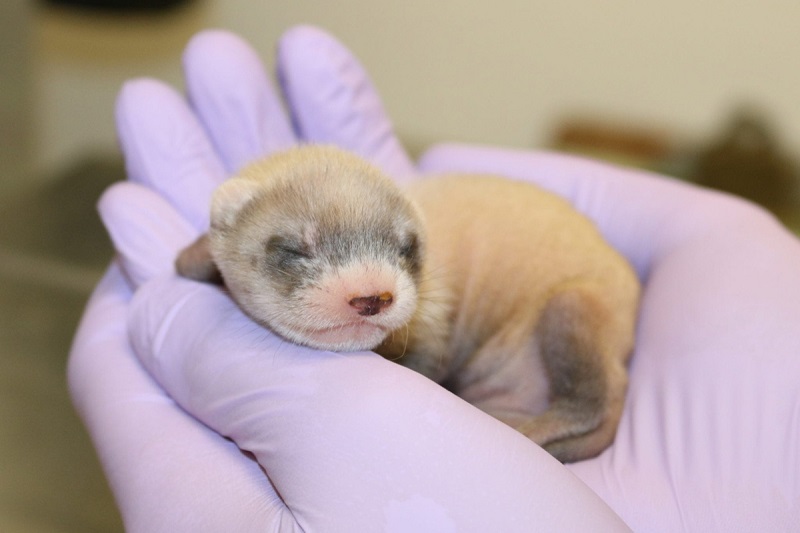EarthTalk®
From the Editors of E – The Environmental Magazine

The birth of this black-footed ferret named Elizabeth Ann on December 10, 2020, marked the first time a U.S. endangered species has been successfully cloned. Credit: Revive & Restore.
Dear EarthTalk: What’s new with the de-extinction movement that’s trying to bring back extinct wildlife species? — P.L., Danbury, CT
De-extinction, the concept of resurrecting extinct species, has long been a topic of debate among scientists and the general public.
In recent years, scientific advances have made it more feasible to bring back extinct species, leading to a renewed interest in doing so.
The non-profit Revive & Restore was created in 2012 by Stewart Brand (founder of the Whole Earth Catalog) and Ryan Phelan to help usher in a new age of conservation based on the implementation of de-extinction strategies.
One of the most significant developments has been the successful cloning of extinct species, such as the Pyrenean ibex and the bucardo, both wild goat species. In 2009, scientists successfully cloned a Pyrenean ibex, but the newborn goat died shortly after birth due to respiratory failure.
In 2021, researchers successfully cloned a black-footed ferret, an endangered species that was declared extinct in 1979.
The cloned ferret, named Elizabeth Ann, was born in a lab and has since been released into the wild to help boost the population of the species.
Another development has been the use of genetic engineering to recreate extinct species.
Scientists can extract DNA from fossils, museum specimens or frozen tissue samples and use it to create an embryo of the extinct species.
In 2013, scientists successfully created a hybrid elephant-mammoth embryo using DNA from a woolly mammoth and an Asian elephant.
The embryo was not brought to term, but the research demonstrates the possibility of using genetic engineering to create extinct species.
The de-extinction movement is not without its critics, however.
Many argue that the focus on de-extinction takes resources and attention away from conservation efforts aimed at protecting and preserving endangered species. Others worry about the ecological implications of reintroducing extinct species to the environment.
The ecosystem may have changed since the species went extinct, and reintroducing them could have unintended consequences, such as disrupting existing relationships between organisms and the environment or spreading disease.
Despite these concerns, the de-extinction movement continues to move forward.
The for-profit Colossal Biosciences has raised $225 million over four rounds of venture capital investment to fund its efforts to bring back Dodo birds, Tasmanian tigers and woolly mammoths, among other extinct species, using genetic engineering.
In the case of the mammoth, the company is working on the creation of an elephant-mammoth hybrid embryo that could be carried to term by an elephant surrogate.
The researchers hope to release these Frankenstein mammoths into the wild in the Arctic tundra, where they would help restore the ecosystem by grazing on the grasslands and helping to prevent permafrost from melting.
There are many challenges that must be overcome before extinct species can be successfully brought back. In numbers.
However, advances in genetic engineering and cloning technologies have made it increasingly feasible to resurrect extinct species, and the possibility of bringing back species such as the woolly mammoth has captured the public’s imagination.
As the de-extinction movement continues to evolve, it will be important to balance the potential benefits with the ecological and ethical considerations involved.
CONTACTS:
Revive & Restore, reviverestore.org
Colossal Biosciences, colossal.com
EarthTalk® is produced by Roddy Scheer & Doug Moss for the 501(c)3 nonprofit EarthTalk.
See more at https://emagazine.com
To donate, visit https://earthtalk.org
Send questions to: question@earthtalk.org
